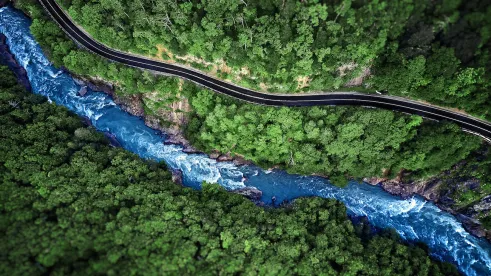A recently disclosed internal memorandum from the Assistant Secretary of the Army for Civil Works details a nascent effort to issue guidance that achieves “nationwide consistency” on a series of issues that are routinely raised in the permitting of dredge and fill activities under Section 404 of the Clean Water Act (CWA). The memorandum, addressed to the Chief of Engineers of the United States Army Corps of Engineers (USACE), sets forth an internal directive requiring the USACE to draft guidance on three topics:
- The appropriate duration of jurisdictional determinations, jurisdictional delineations and individual permits issued under CWA, Section 404;
- Timelines for state water quality certifications under CWA, Section 401; and
- The level of specificity in project descriptions and activities necessary for the alternatives analysis for individual permits conducted pursuant to the CWA, Section 404(b)(1) Guidelines.
The memorandum recognizes that, over time, the USACE’s districts have inconsistently applied the Section 404 implementing regulations. For example, the substantive portion of the memorandum strikingly opens with the observation that some districts have issued five-year (5) dredge and fill permits for projects involving fifteen (15) years of dredge and fill activity, causing permittees to go through additional administrative proceedings, and in some cases, submitting new applications in order to obtain permit coverage for the entire length of a project. In directing the USACE to draft guidance on this, and other issues, the Assistant Secretary seeks to correct erroneous applications of the Section 404 regulations and to provide for nationwide consistency.
The memorandum requires the USACE to prepare nationwide guidance that clarifies the following points:
- Duration of Individual Permits, Jurisdictional Determinations, and Jurisdictional Delineations: District Engineers will be directed to ensure that each Section 404 individual permit is granted “for a time period sufficient for the permittee to complete the work specified in the application.” Further, jurisdictional determinations and delineations are to be aligned with the duration of the permit. The alignment of permit duration with jurisdictional determinations and delineations also will apply to timely extension requests—including extension requests that are pending when the final guidance is issued.
- Timelines for Section 401 State Water Quality Certifications: A key hurdle in the Section 404 permitting process is for the applicant to document that each relevant state has certified that the proposed dredge and fill activity will comply with state water quality standards under CWA, Section 401. By statute, the review and certification period may take no longer than one (1) year. However, the USACE’s existing regulations have adopted a shorter, presumptive sixty (60) days review period, unless the District Engineer determines that a shorter or longer period is reasonable under the circumstances. The draft guidance will clarify that, absent special circumstances, the default timeframe for a state to complete its water quality certification review is sixty (60) days from the state’s receipt of the applicant’s request for certification. Criteria governing any request to extend the review period beyond sixty (60) day also will be identified as part of the guidance. On this latter point, the memo explicitly excludes workload or resource constraints as grounds for a longer review period.
- Specificity of Project Descriptions: The USACE’s Section 404 individual permit decisions are preceded by a review of whether there are “practicable alternatives” to the proposed dredge and fill activity that achieve the overall project purpose while avoiding/minimizing impacts to waters of the United States. This review process can be highly fact-intensive—requiring an appropriate level of detail regarding the proposed activity. Conversely, the alternatives analysis still must be bounded by the level of information that is reasonably available. Here, the USACE has been directed to develop guidance that allows a level of uncertainty regarding specifics of the proposed project as long as an appropriate alternatives analysis can be accomplished. One example given is that it may not be necessary for the applicant to disclose the specific tenants occupying a proposed project, when the general type of tenant is sufficient to understand the nature of the dredge and fill activity.
The format of this pending guidance is not pre-determined and the USACE has discretion to provide guidance in a variety of formats. The most likely approaches would be either a formal nationwide guidance directive to District Engineers or a Regulatory Guidance Letter. The USACE’s timeline for action also is uncertain. When issued, the memorandum contemplated a forty-five (45) day period for preparation and submission of the draft guidance for review by the Assistant Secretary—a period that ended, approximately, at the end of January 2019. An updated timeline has not been announced.
This effort should be watched closely. The issues covered in the memorandum—the duration of permits and related delineations/determinations, the timing of associated reviews, and information sufficiency—are foundational to consistency in a federal permitting process. By providing clarification and ensuring consistent application of permitting procedures, across all USACE districts, the pending guidance will provide an important measure of certainty that benefits the Section 404 permitting program.
Update on Proposal to Revise the “Waters of the United States” Definition
Today’s Federal Register included the formal publication of a proposed rule revising the definition of “Waters of United States” under the Clean Water Act. Van Ness Feldman previously issued an alert regarding this proposed rule in December 2018. The comment deadline for this proposed rule is April 15, 2019.








 />i
/>i

